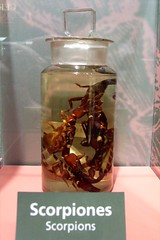Through March 1, 2009 at the Peabody Essex Museum, Salem Massachusetts

Aurora Borealis, 1865, Frederic Edwin Church, 56 x 83½ inches, oil on canvas
Capturing the high drama and stark beauty of historic polar expeditions, To the Ends of the Earth, Painting the Polar Landscape presents more than 50 works by prominent artist-explorers, from monumental romantic canvases to early modernist works in pastel — all rarely shown in a single exhibition. The exhibition offers a range of artistic responses to the unique landscapes of the Arctic and Antarctic — from the documentary to the sublime and existential, by renowned painters such as Frederic Edwin Church, Rockwell Kent and Lawren Harris.
(from the PEM website)
My Wife and I had the opportunity to go to the opening of the new exhibit at the Peabody Essex Museum, entitled “To the Ends of the Earth, Painting the Polar Landscape. I’ve posted on things related to exhibits at PEM before, and it is always a joy to go there. This new exhibit is no exception. I believe this is the largest exhibit ever to focus on Polar landscapes in art. The works, covering a century of exploration and styles in painting are really remarkable. For those (like me) who collect exhibition books or catalogues, the companion book is not only complete with all of the exhibited paintings, but is excellently done and inexpensive. (Though those, again like myself, who have an eye for a more permanent personal library, may wish for a hardback version).
The larger works follow the grand scenic painting styles of the nineteenth century. As such, if you are not familiar with early modernist painting, the transition to the twentieth century works can be anticlimactic. I would strongly suggest perusing the numerous books on the topic that the PEM has at the bookstore, and will probably have strewn around the seating areas throughout the exhibit (not there for the opening, but usually feature at past exhibits). Especially look to materials on Rockwell Kent. There was a special film shown on Kent at the opening, which is not listed on the website, but if it is available I highly recommend it. These materials will help the viewer understand the stylistic transitions, and to see the change in the early twentieth century where artists began to represent these regions in their inherent drama and beauty, and not as a backdrop for human adventure. With the big dramatic canvases, it would also be easy to overlook the various notebook sketches and smaller works. Take the time to dwell over these, as they are absolutely marvelous. I was especially drawn to the pastels of David Abbey Paige (1901-1979) in which he recorded many different atmospheric phenomena.
The PEM posts a PDF file for printout with information on the works, a list of references, and brief biographies of the artists and explorers, which would make a handy pre-visit read.
If you are in Eastern Massachusetts between now and 1 March 2009, To the Ends of the Earth, Painting the Polar Landscape would make for an excellent excursion.
For additional information, see the Press release.
(links good at time of post) UPDATE: bad link coding fixed (my bad)
























































